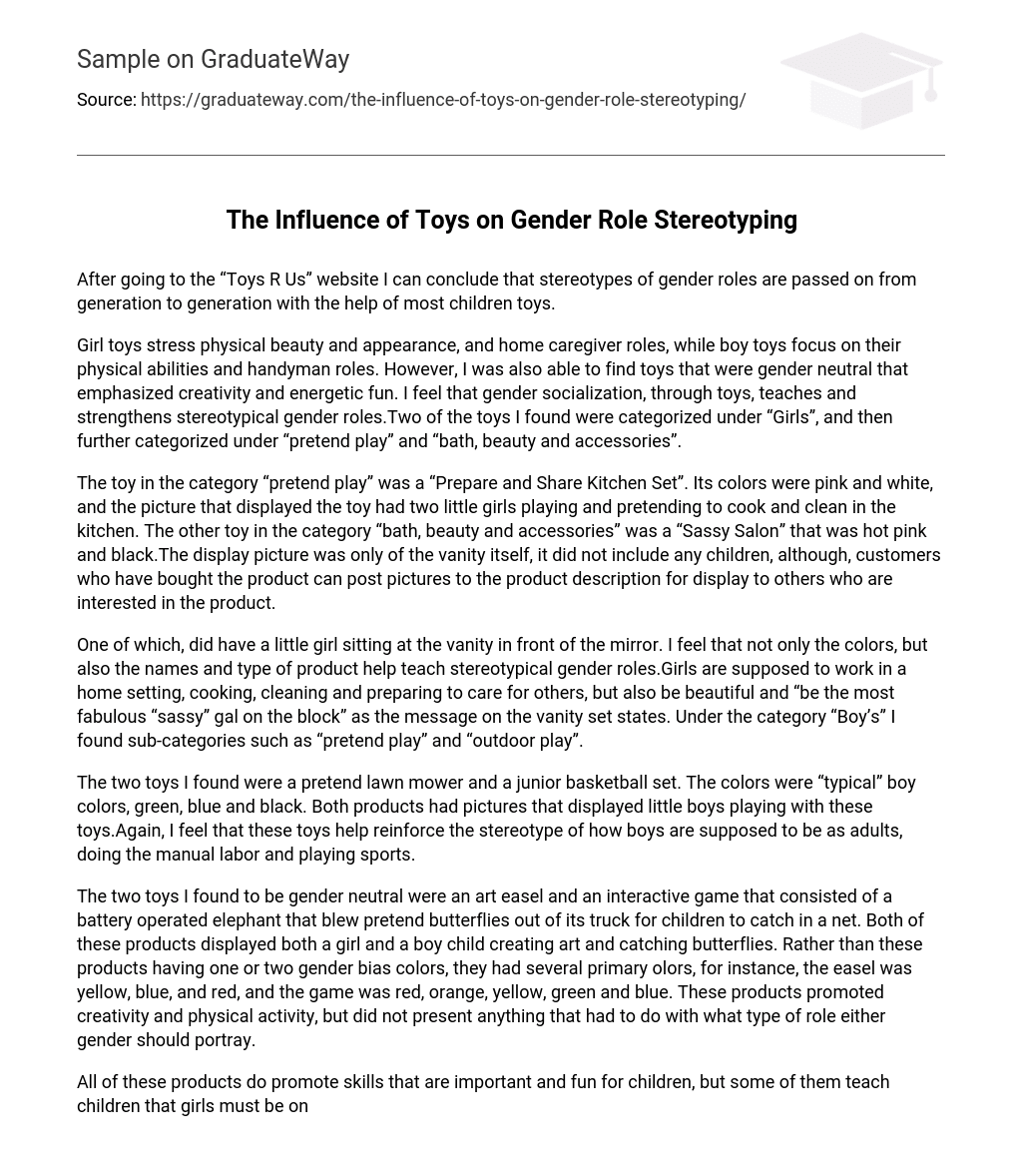Upon visiting the “Toys R Us” website, it is evident that gender stereotypes persist throughout generations via the majority of children’s toys.
Girl toys place emphasis on physical beauty and appearance, as well as home caregiver roles, while boy toys emphasize physical abilities and handyman roles. Nonetheless, I was able to discover gender-neutral toys that highlight creativity and energetic fun. I believe that the process of gender socialization, facilitated by toys, instructs and reinforces stereotypical gender roles. Among the toys I came across, two were listed under the “Girls” category and further classified under “pretend play” and “bath, beauty and accessories”.
The toy in the category “pretend play” was a “Prepare and Share Kitchen Set” with pink and white colors. The picture showed two little girls playing and pretending to cook and clean in the kitchen. On the other hand, in the category of “bath, beauty and accessories,” there was a “Sassy Salon” which was hot pink and black. The display picture only showed the vanity itself, without any children. However, customers who have purchased the product can upload pictures to the product description to show others who might be interested in the item.
One child had a girl sitting at the vanity in front of the mirror. The colors, names, and types of products used reinforce gender stereotypes. Girls are expected to work at home, cook, clean, care for others, and be beautiful. The vanity set encourages girls to be sassy and fabulous. In the “Boy’s” category, I noticed subcategories like “pretend play” and “outdoor play”.
I discovered two toys: a pretend lawn mower and a junior basketball set. These toys are designed in typical boy colors such as green, blue, and black. The accompanying pictures depict boys playing with these toys. Once again, I believe that these toys perpetuate the stereotype that boys should engage in manual labor and sports as adults.
The two toys I discovered as being gender neutral were an art easel and an interactive game involving a battery-operated elephant. The game entailed the elephant blowing imagined butterflies out of its trunk for children to catch with a net. Both toys depicted boys and girls engaged in art and butterfly-catching activities. Unlike other toys that favor specific genders, these products incorporated various primary colors. The easel, for instance, was yellow, blue, and red, while the game featured red, orange, yellow, green, and blue. These items encouraged creativity and physical play without implying any gender-specific roles.
All of these products promote important and fun skills for children, but some reinforce gender stereotypes. It is important to recognize that there are stay-at-home male caregivers and skilled women in sports and handy work. These products may discourage children from pursuing their interests or even lead to teasing or bullying if they are not aligned with their gender. In my view, certain toy products do not reflect the reality because the manufacturers only cater to one gender with color themes and designs.
The hope is that parents will support their children’s interests and curiosities, regardless of the category or stereotype associated with a toy.





